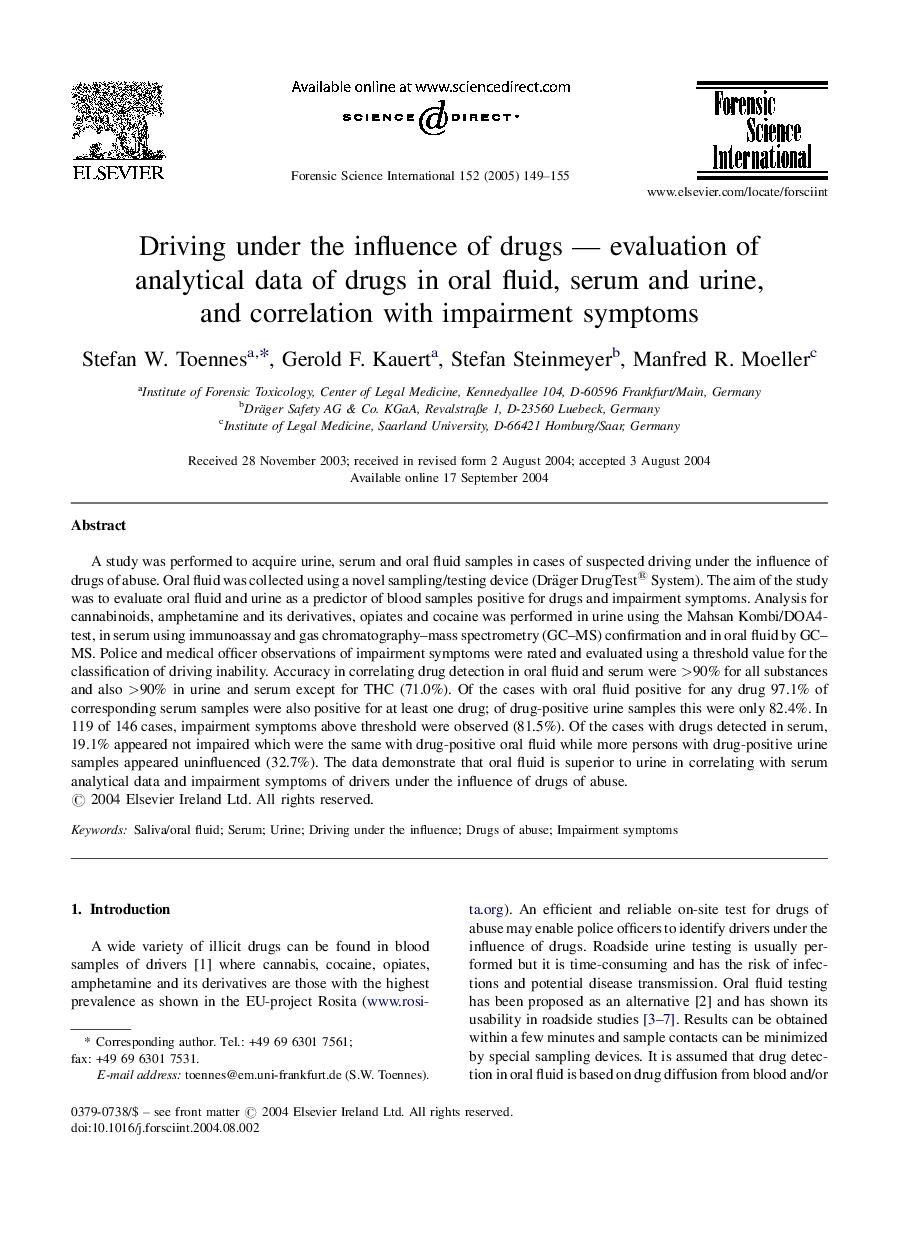| Article ID | Journal | Published Year | Pages | File Type |
|---|---|---|---|---|
| 9622487 | Forensic Science International | 2005 | 7 Pages |
Abstract
A study was performed to acquire urine, serum and oral fluid samples in cases of suspected driving under the influence of drugs of abuse. Oral fluid was collected using a novel sampling/testing device (Dräger DrugTest® System). The aim of the study was to evaluate oral fluid and urine as a predictor of blood samples positive for drugs and impairment symptoms. Analysis for cannabinoids, amphetamine and its derivatives, opiates and cocaine was performed in urine using the Mahsan Kombi/DOA4-test, in serum using immunoassay and gas chromatography-mass spectrometry (GC-MS) confirmation and in oral fluid by GC-MS. Police and medical officer observations of impairment symptoms were rated and evaluated using a threshold value for the classification of driving inability. Accuracy in correlating drug detection in oral fluid and serum were >90% for all substances and also >90% in urine and serum except for THC (71.0%). Of the cases with oral fluid positive for any drug 97.1% of corresponding serum samples were also positive for at least one drug; of drug-positive urine samples this were only 82.4%. In 119 of 146 cases, impairment symptoms above threshold were observed (81.5%). Of the cases with drugs detected in serum, 19.1% appeared not impaired which were the same with drug-positive oral fluid while more persons with drug-positive urine samples appeared uninfluenced (32.7%). The data demonstrate that oral fluid is superior to urine in correlating with serum analytical data and impairment symptoms of drivers under the influence of drugs of abuse.
Related Topics
Physical Sciences and Engineering
Chemistry
Analytical Chemistry
Authors
Stefan W. Toennes, Gerold F. Kauert, Stefan Steinmeyer, Manfred R. Moeller,
